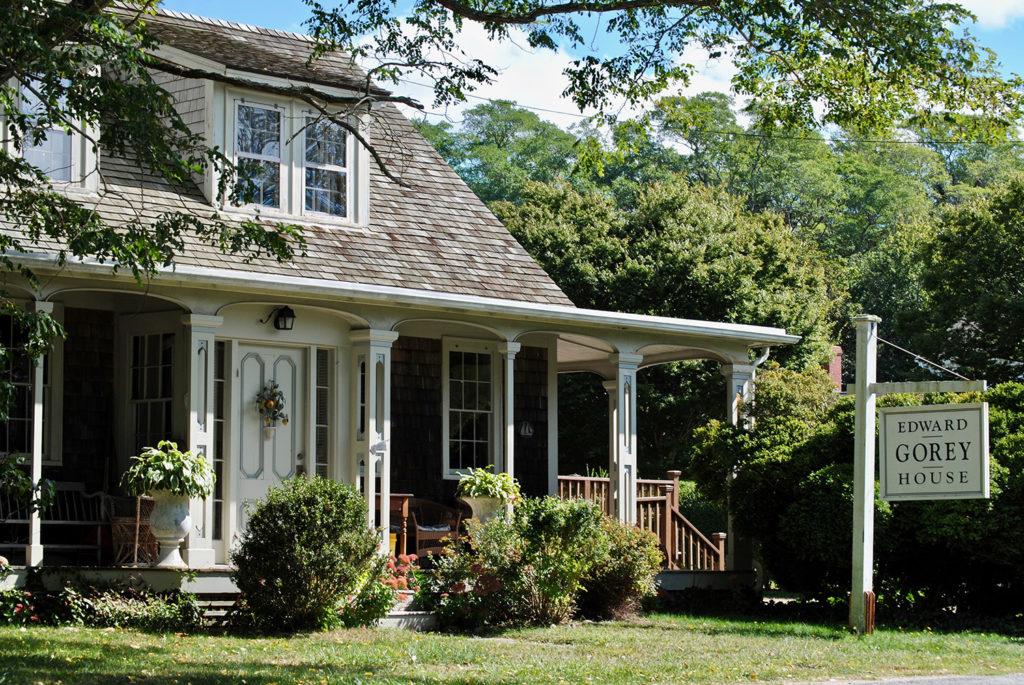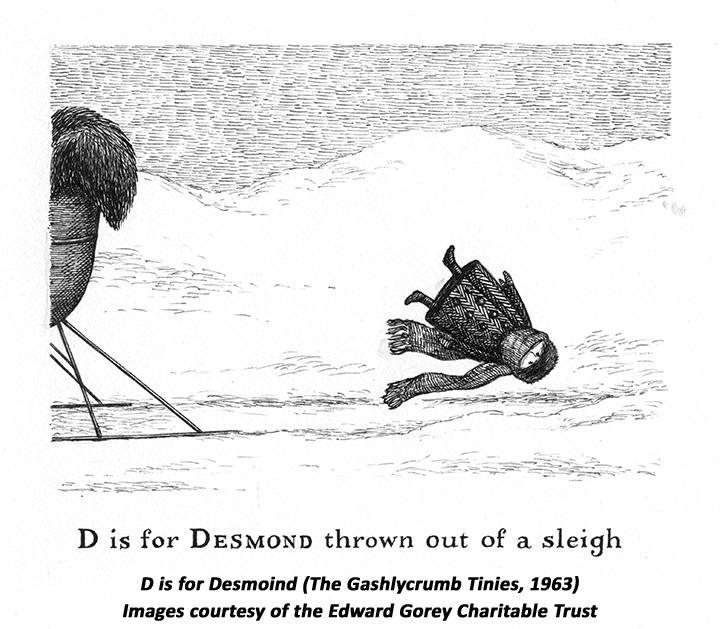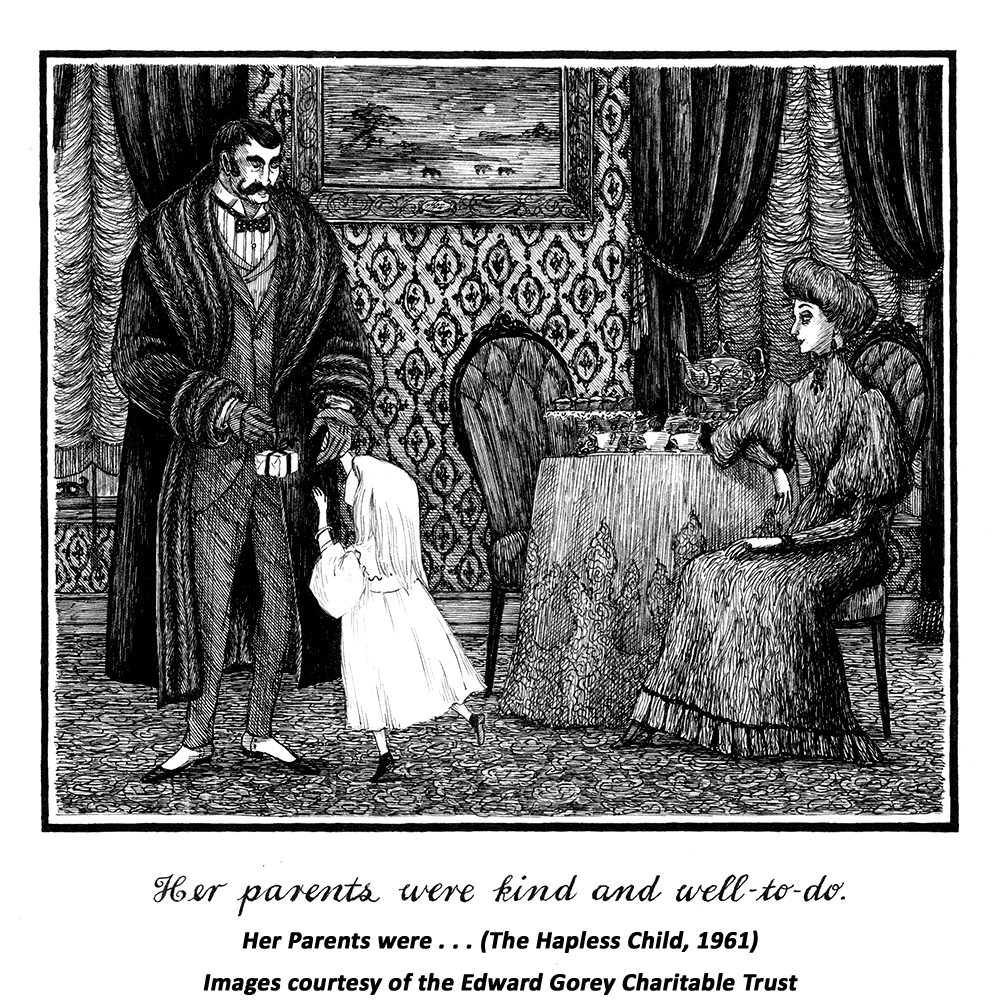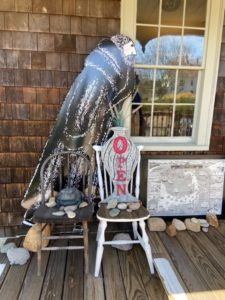
A centuries-old sea captain’s home in Yarmouth Port became the final dwelling place for a quirky, but reclusive artist when he moved from New York in the 80s. It was there that he spent his remaining 14 years of life with his curious assortments of oddities, over 26,000 books, and most importantly his “people” as he endearingly referred to them, his cats. Edward Gorey’s work as an author, illustrator, and designer spanned nearly 50 years, earning him a Tony Award for Best Costume Design for his work on the Broadway revival of Dracula, and a cult following for his exquisitely gothic style of illustration and macabre surrealism.
“I must say, I don’t always understand Ted’s books, but I do like them.” – Edward Gorey’s mother, Helen
In 1953 Edward Gorey self-published his first book, The Unstrung Harp, thus beginning a cascade of literary nonsense with distinctive pen and ink lines depicting the delightfully dreadful in over a hundred more books, and by the time of his death, several more unpublished manuscripts stashed neatly, (and haphazardly), around his home. His work became the inspiration for Lemony Snickett’s Series of Unfortunate Events, Tim Burton’s Nightmare Before Christmas, and Neil Gaiman’s Coraline for which Gaiman lamented was written after Edwards’s death, thereby missing its chance for his illustration. Edward himself wrote his books using both his given name and its anagrams, such as Ogdred Weary, Raddory Gewe, and D. Awdrey-Gore. As private as he was popular, Gorey preferred to avoid the spotlight. Very much an animal lover and advocate, he usually had up to 6 cats, the perfect number according to him. Before he died he established The Edward Gorey Charitable Trust to manage his legacy and estate, and to support his favorite animal welfare organizations locally and afar. The upstairs of the house continues to be occupied by cats, keeping the spirit of the home authentically charmed.
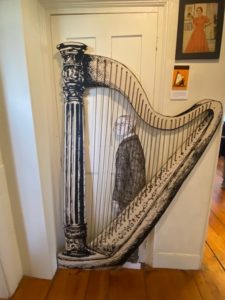
Today, 22 years after his death, The Edward Gorey House stands as an archive for his admired collections of rocks, trinkets, books, and the grotesque. Cheese graters are casually displayed with skulls. A preserved Belgian waffle and a mosaic of checks from his favorite dining spot, Jack’s Outback II, are framed together on the kitchen wall. Handmade puppets and dolls adorn the rooms and halls amongst his characters and illustrations. One hapless child’s legs and feet protrude from a rug. A collection of old matches is stacked on the mantle. A bottle of lye on the windowsill.
Past year’s exhibits have included He wrote it all down Zealously: Edward Gorey’s Interesting Lists in 2020, and Hapless Children: Drawings from Mr. Gorey’s Neighborhood in 2021. This year’s Exhibit is Doing the Steps: Edward Gorey and the Dance of Art, which shares with us the influence Edward’s passionate infatuation with the New York City Ballet had on his art and life.
“Gorey once said that he could visualize that progression of ballets in his head, like a movie he could play forward or backward, decades of form and movement and story—literally, at his fingertips.”
The Edward Gorey House is open from early April through the end of December each year.
8 Strawberry Lane • Yarmouth Port, MA 02675
508-362-3909 • edwardgoreyhouse@verizon.net
Click here to see house visiting hours, tour times, and admission info. Reservations are encouraged due to limited capacity. Admission is free for members.
This blog is funded through the Town of Yarmouth’s Tourism Revenue Preservation Fund.
(Britt Skinner is a freelance writer.)


